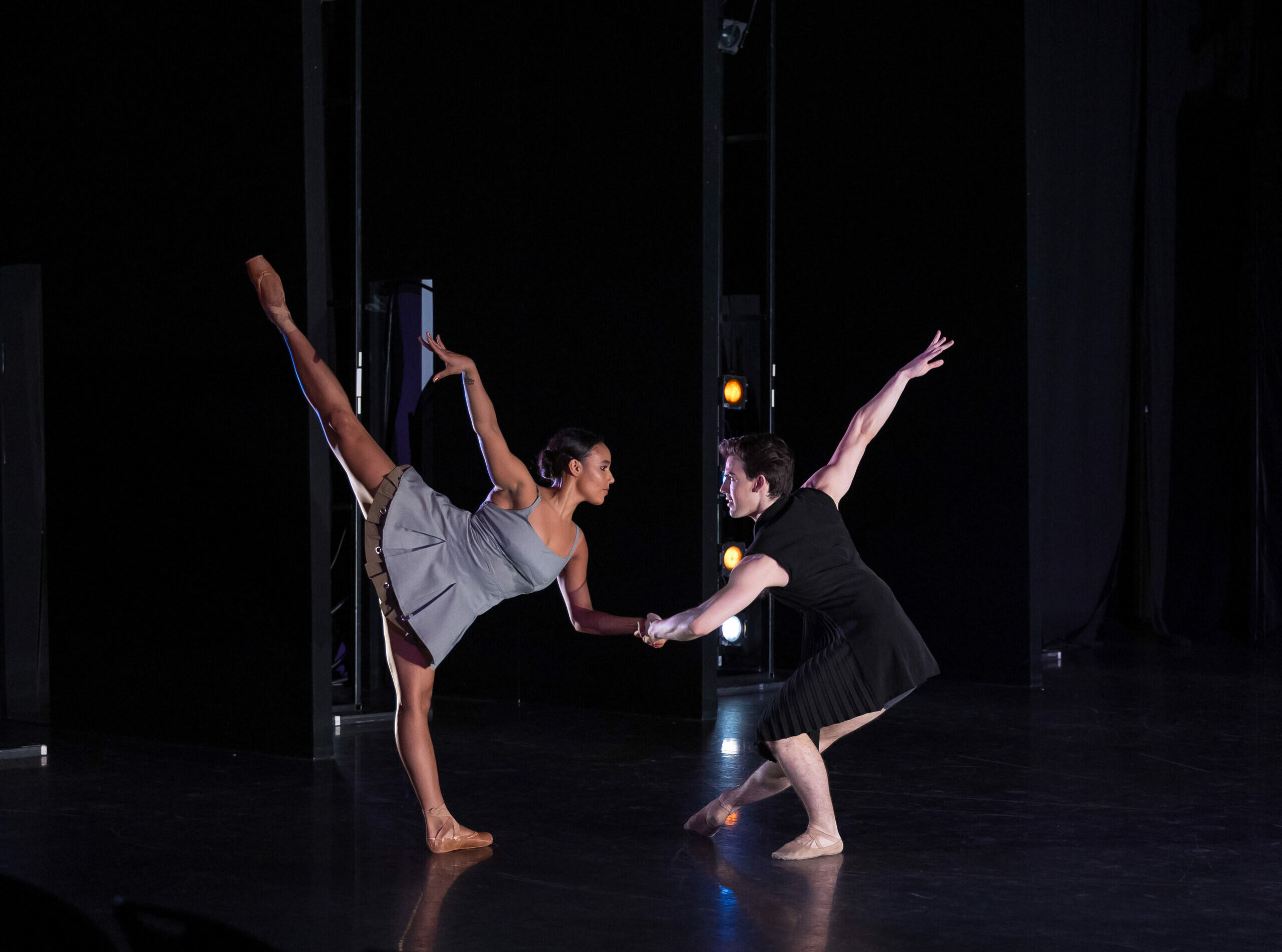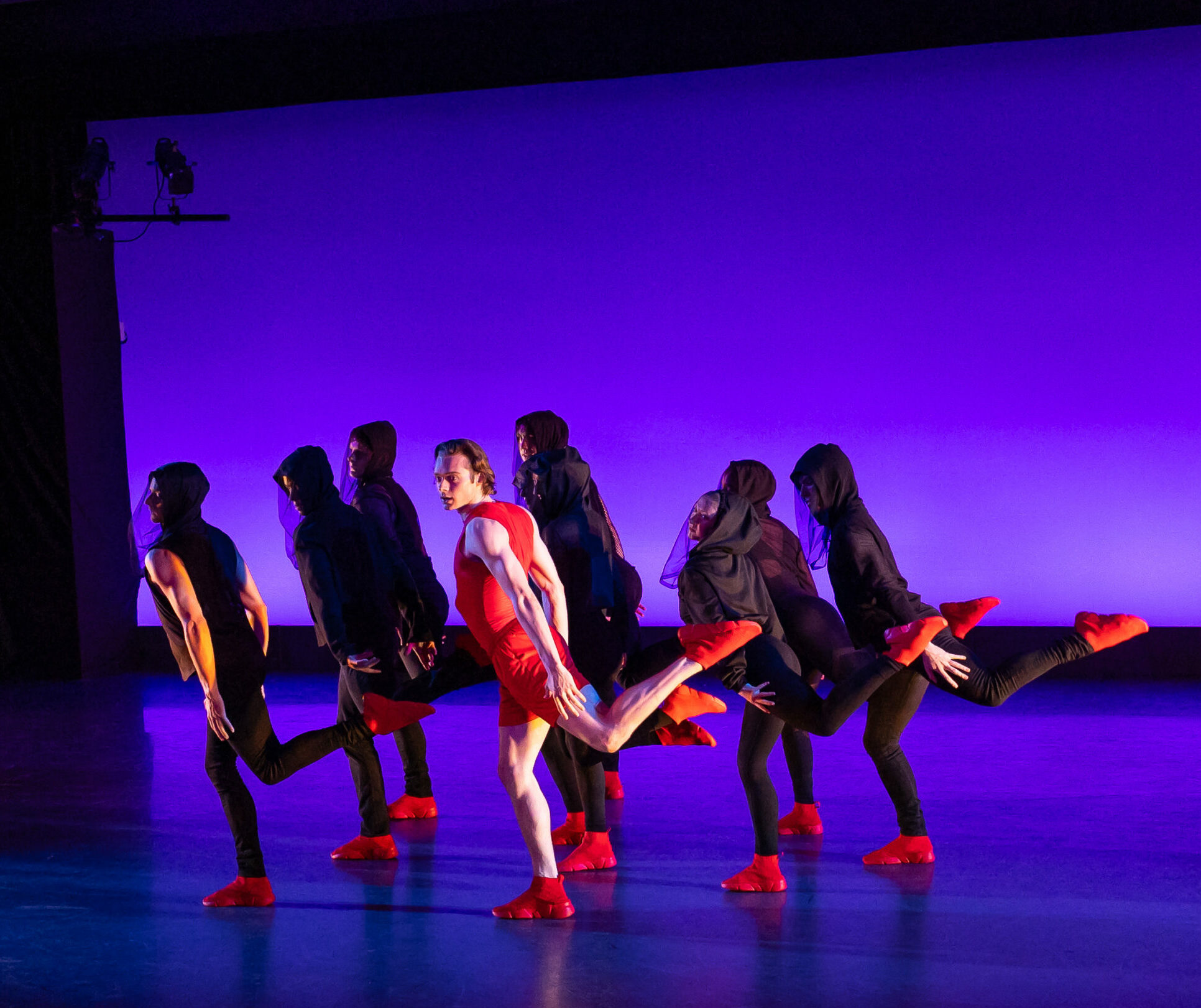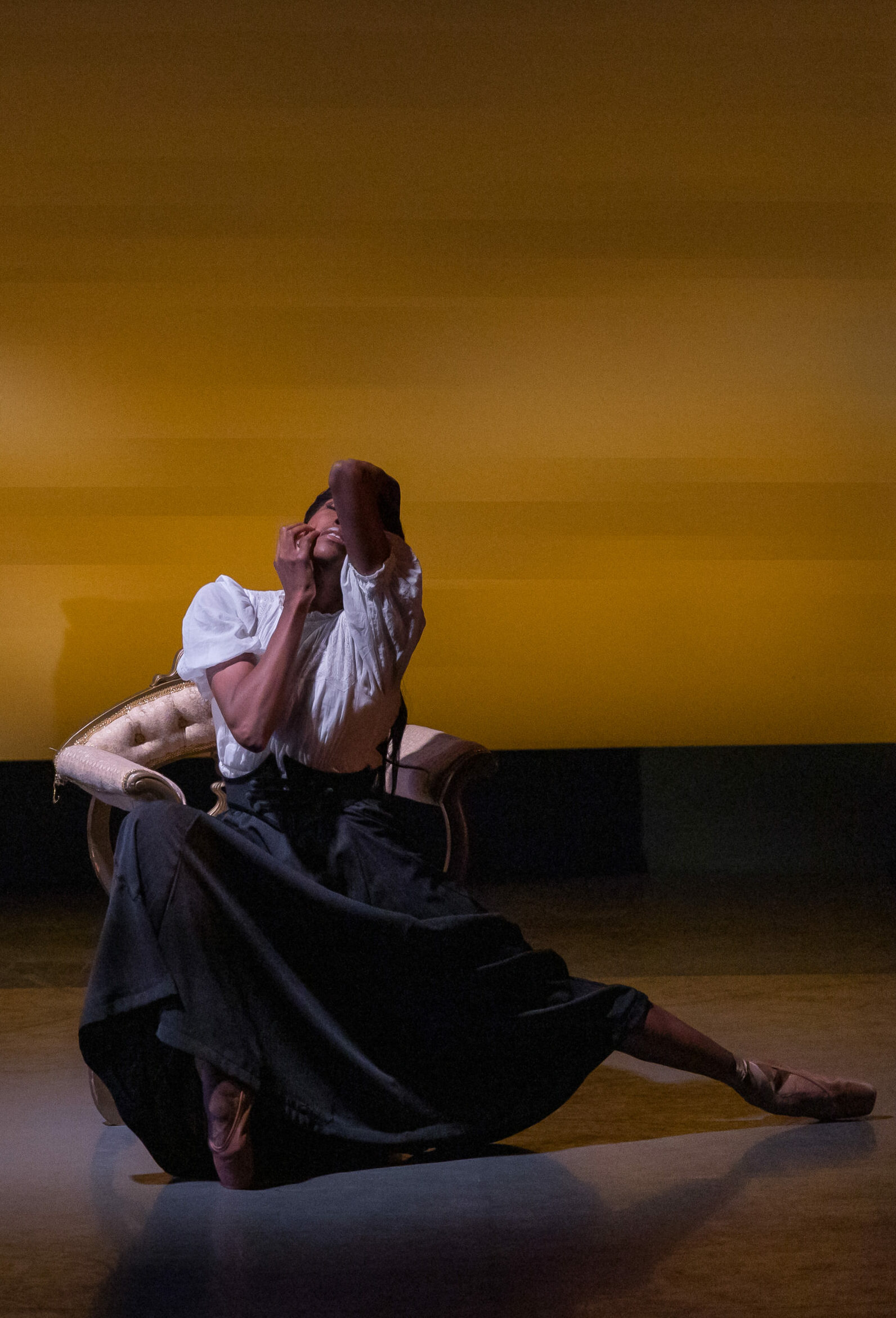The Nashville Ballet Tells Its Tale with Five Short Stories
It was exciting, no thrilling, to watch the story of the Nashville Ballet unfold before our very eyes. The narrative vigor, imagination, and artistry in Five Short Stories boldly declared a flourishing company whose future is seeded with care and attention. Past and present dancers of the company, plus new artistic director Nick Mullikin had free rein to create 10–13 minute works on any- or no subject with any music. All five took the reins of this challenge and galloped forward with skill and individuality.
Current dancers Aeron Buchanan and Anneliese Guerin interwove their choreographic imaginations with the musical imaginations of David Lang and Devin Farrell, composers whose works they know personally. Guerin chose to create a a romantic tale in three movements—A Moment in Time.

A couple dressed in pale, bride-like colors, meets amidst the bustling hubbub of New York City. Guerin wisely choreographs this scene in near slo-mo action giving a feel of fantasy. As the couple falls in love in the second movement, an attractive pas de deux, their hands often flutter near their hearts as a metaphor for the fluttering emotion of growing attraction. According to the choreographer some of the coordination with the composer was only settled the week before, and it did seem as some of the awkwardnesses in embrace releases for the couple needed a bit more rehearsal time, but this was nevertheless an effective piece. This is particularly the case in the third movement when the bustle returns, but ends dramatically with a darkened stage suddenly lit by two spotlights, showing the lovers now widely distanced from one another.
Buchanan chose a more audacious path for his Distinguishing Features. As his pre-concert talk revealed, he wanted to create a piece that “show the dancers in their own unique way.” He even worked with the dancers, allowing their input on costumes that ranged from Japanese schoolgirl pleated skirts, shirtless vests over bell bottoms, and kilt-like skirts over leggings, through more traditional short-skirted leotards. Son of a dance teacher, Buchanan used a more classical step vocabulary, like the bourrée en couru (quick tiny steps en pointe) that paired agreeably with the clanging minimalism of David Lang’s electronic music. The individuality of each dancer’s strength made the piece resemble a stylized warmup with leaps and splits and writhing in varying directions. This was, deservedly, one of the most enthusiastically received pieces.
Current NB dancer Imani Sailers and former dancer Julia Eisen chose to take the “story” element more literally, each selecting a well-known short story with a female protagonist. Interestingly, “The Red Shoes” (Hans Christian Andersen) and “The Yellow Wallpaper” (Charlotte Perkins Gilman) both feature women whose desires are quashed as invisible or unworthy by an unfeeling society. “Red Shoes,” introduced by Sailers in striking red stack heels, was chosen because of its name and its fame in the dance world in renowned films about the obsessive nature of a dance career released in 1948 and 2020.

Although I typically approach the pairing of major composers of past eras with living composers of today with trepidation, Sailers chose well in three string quartet movements from Impressionists Claude Debussy and Maurice Ravel, and current composer Jennifer Higdon who skillfully merged her artistic voice with quotes from those who preceded her. Emily Ireland-Buczek and Garrett McCabe served well as the little girl who desperately wanted red dance shoes and the mysterious red-dressed entity that shadows her. There was more mirroring, little touching in their pas de deux, as hooded figures, much like the kōken in Kabuki theater (black-hooded stagehands and dressers who are intended not to be seen) carried them about the stage.
Sailers’ most creative work declared itself in the second movement performed to the second “assez vif (quite lively)” movement of Debussy’s sole string quartet. Quick modern foot movements, like tapping the instep on the floor, coupled with more classical postures, clearly indicated the shoes’ independence from the girl’s will. This strong work bears repeated performances, hopefully becoming part of the NB repertoire.

Like Sailers, Buchanan, and others on the program, Eisen worked with talented costumier Mycah Kennedy. Kennedy, whose work also shone in NB’s first dance festival in July 2023, consistently adds depth and inventiveness to NB productions. Eisen’s elegant work was rehearsed and introduced by Kate Crews Linsley, one of NB’s rehearsal directors. The work was the most classic in tone, which fit the story’s late romanticism. Eisen’s choice of music by Florence Price, the first African American woman to have a symphony played by a major orchestra, was indeed inspired.
The protagonist is a woman (Claudia Monja) in a deep depression whose husband, a physician (Nicolas Scheuer, basically tells her she’s hysterical, it’s all in her head. She becomes obsessed with the putrid yellow bedroom wallpaper in which she sees three phantasmic women (Sarah Pierce, with Marissa Stark and Kennedy Brown) who gracefully disappear whenever her husband enters the room. The two painted flats on stage were just enough set for this gently horrifying story. The elegance of the beautifully drifting phantasms enhanced the atmosphere as the narrator finally breaks from reality, desperately ripping the paper off the walls. The husband enters, sees the damage, and collapses in horror. Beautifully choreographed movements of the narrator and her fantastic companions eerily continue well past the ending cadence of the music. Another powerful piece for this already strong program.
The final work, Where We Were Supposed to Be, by Nick Mullikin, featured music by romantic works Brahms, Schumann, a neo-romantic work by Cristina Spinei, and a more upbeat popular music work by Madi Diaz. With two couples in white and shades of gray, the intent is to depict the rejection of “what we truly want…for fear of what we are supposed to want.” As the work nears the liveliest music at the end, the turns and spins match that energy. It was an attractive piece that might have worked more effectively at the beginning or as the second work among these truly powerful artists producing a truly powerful storytelling.
- About the Author
- Latest Posts
Y Kendall is a Stanford-educated musicologist, specializing in dance history who recently earned an MFA in Creative Nonfiction at Columbia University, studying nonfiction writing with Ben Ratliff and Margo Jefferson. Kendall’s diverse works have been published in Alchemy: Journal of Translation, Columbia Journal, Mitos Magazín, The Hunger Mountain Review, and The Salt Collective, among others. Born and raised in Tennessee, Kendall now lives near Nashville, freelancing as a flutist and writer, while caregiving for relatives.



